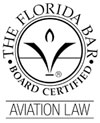Although it has been more than 100 years since the Wright brothers opened the door to heavier than air powered flight, some people still board the most technologically advanced airliners with a fear that they may never return. Other than deep-seated phobias best addressed by psychiatrists and psychologists, why would an otherwise “normal” person be afraid to fly? As a general aviation pilot, I have encountered an occasional white knuckled passenger. Usually it’s not even related to a fear of heights. Most of us, pilots included, are deathly afraid to stand on the edge of a precipice and look down, but are not afraid to fly in an airplane. All of those that I have met who fear flying will acknowledge the safety record of flying compared to driving, so what makes flying something to fear? If a car experiences a mechanical problem on the highway, as passengers we know the driver will simply pull over to the side of the road. If the driver doesn’t pull over, we can exert some control and request the driver to pull over. But most passengers in an airplane have no understanding whatsoever as to how the pilot may deal with anything that may go wrong, and the passengers certainly are not in a position to exert any control. Perhaps it is this lack of understanding of how the airlines manage the risks of flying, and the inability as a passenger to control such risks in even the slightest way, that causes a fear of flying.
Everyday life is full of risks, whether it is walking across the street or driving to work. How we manage those risks determines our “survivability”. If we cross the street only at a crosswalk and only when the sign tells us to cross, and if we drive at the speed limit and come to a complete stop at every stop sign, the risk is low and survivability is high. If we cross in the middle of the street in heavy traffic, and if we drive 10 mph above the speed limit and coast through stop signs, the risk is higher and survivability is lower, but we have made a conscious decision that the level of risk is acceptable. We have controlled the risk we are willing to accept. Travel by air involves similar concepts of risk management, with one difference – the passengers have no control over the management of the risk.
The airlines must manage what are arguably the most severe travel risks. If the airlines screw up, the consequences can be disastrous and deadly. Airline passengers must trust complete strangers to manage the risks of flight for them. And that can be scary if there is no understanding of all the measures taken by the airlines and air crews to minimize risk. Let’s take a look at the most significant types of risks the airlines manage, and how they do it. With this understanding, no one should fear flying.
Pilot Error: Every pilot must meet strict knowledge and skill requirements before the Federal Aviation Administration (FAA) will issue a pilot’s license. Additionally, before a pilot is considered qualified by the FAA to fly the large aircraft operated by the airlines, the pilot must acquire a “type rating” from the FAA in that aircraft, which requires a further demonstration of experience, knowledge and skill. In addition to the FAA requirements, which are minimum requirements for the pilot to act as “pilot in command” of the aircraft, each airline has significant experience requirements for a pilot to be hired. Once hired by an airline, the pilot must serve an apprenticeship as a First Officer (co-pilot), before being considered for the position of Captain. Even space shuttle commander Robert “Hoot” Gibson, who flew five space shuttle missions as a NASA astronaut, had to start as a First Officer when he retired from NASA and went to work for an airline. But there’ s even more. Every airline pilot must undergo periodic flight/simulator checks to demonstrate continued competence and skill levels. So, while pilot error may be a risk that passengers cannot control, the airlines and the FAA control it so extensively that the result is an extremely minimal risk to passengers.
Mechanical Failure: Every aircraft, including the largest airliners, undergoes FAA mandated periodic, very extensive maintenance inspections. The inspections are based on both flight time and calendar time. In addition, aircraft components have life limits, which means they are periodically replaced with new parts even if not defective. Mechanical failure is a risk that the FAA and the airlines manage so completely that the risk to passengers is practically nil.
Air Traffic Control (ATC): Our air traffic control system is managed by the FAA. Air traffic controllers have the responsibility to separate air traffic – make sure two aircraft do not collide with each other – and they work in an intense environment. While the airlines have no direct control over the ATC system, they have input into the management of the ATC risk because the pilot in command of the aircraft, and not the air traffic controller, is the final authority as to the safe operation of the flight. There has not been a mid-air collision involving an airliner and causing death or injury since 1986. The risk is managed, and the risk is extremely low.
Weather: The technology available to monitor and forecast weather all over the world is so advanced, that weather related accidents are rare today. Severe weather can be avoided by advance planning, and by circumnavigation of weather in flight. Some weather events simply cannot be forecast, but these are usually not catastrophic events. The risk is managed, and the risk of a weather related catastrophe is very low.
If you are a fearful flyer, understanding how well the risks of air travel are managed by the FAA and the airlines should make you more comfortable on your next flight. According to the U.S. Bureau of Transportation Statistics, every year there are far more fatalities from cars, from trains, and even from recreational boating than from air travel. Keep that in mind the next time you are traveling by air.
Originally posted at The Legal Examiner by Jerry H. Trachtman

 April 19, 2012 in
April 19, 2012 in 


